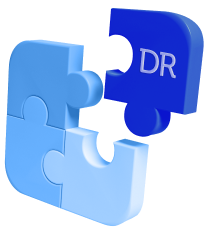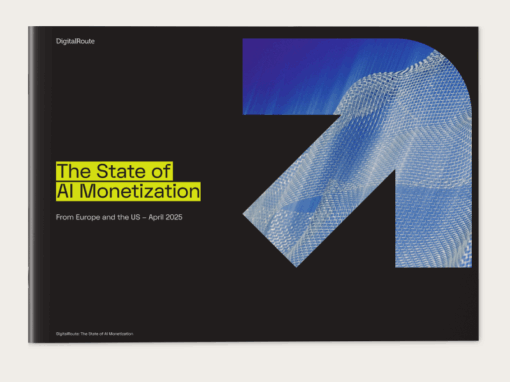Enhancing User Experience – An Increasingly Significant Application of Usage Data
Usage data– a necessity in next generation billing models – is gaining some serious significance in other applications. One such application is its benefits to improved user experience (UX).
In this blog, we’ll look at the substance of “usage” for user experience, how to pick the right level of granularity for your goals, the importance of real-time data, use cases (from business modelling to customer touchpoints), and more.
The Data in Question
The “usage” in “usage data” is taking on an increased relevance in a user experience context. We’re not talking about simply tracking clicks and mouse movements or looking at transactional or demographic info; the kind of information captured by customer data platform (CDP) systems, which, by the way, were mainly developed with marketing activities in mind.
It is worth clarifying that often, it is these CDPs that are used to try and convey the depth of information that should really be collected, enriched, and distributed by purpose-built usage data management solutions. However, this strategy falls short on a couple of points:
- The data sets are fundamentally different – data that generates revenue is not the same information as data that measures specific customer behavior.
- Usage data can come from tangible, real-world sources; IoT sensors on hardware, for example. In these scenarios, CDPs tend to struggle with sources that aren’t from user interfaces.
So yeah, purpose-built usage data management solutions are… well… built for the purpose and context of usage in which it explores the relationship between customer product usage and the value received.
Is it possible to optimize engagement, such that it drives additional usage and leads to greater monetization? The answer lies in data that tells us things like how and when people engage with a product, how much they use it, which features are more popular, and more.
If you sell a software product, this data already exists – it’s the audit data feeding your business intelligence systems. Useful in theory, but painful to leverage. Until now. Okay… that sounded a bit dramatic, but really, it’s gonna be alright. Keep reading and we’ll guide you through it.
The key is to use audit data purposefully, in service of specific user experience hypotheses, applications, and desired outcomes (rather than a manual exploratory approach). So let’s explore the considerations and decisions you need to make in order to make that happen.
Your First Major Decision
Before you can use usage data to enhance user experience, you’ve got a fundamental decision to make: do you need individual usage data, or broader categorized information?
Individual Usage Data
Pros: You can review individual customer experience dynamics on a per-profile basis.
Cons: You need sophisticated (and expensive) systems to clean, attribute, and review large volumes of data.
Catagorized Data
Pros: You can easily identify large-scale trends and customer segments, aggregated data is easier to handle, and the associated cost is lower than that of individual data sets.
Cons: It isn’t possible for you to pinpoint singular accounts or customers, to specifically reach out to or target with deals, upsells, and help.
Both data approaches are viable, but you need to make that choice before specific use cases can be developed. A solid plan will give you the foundations for better results. Then with the granularity decided on, everything hinges on data and the speed with which you can put it to work.
Real-Time or Reduced Benefits
Imagine queueing up to get on a train, be it the NYC Subway or the Stockholm Metro, and swiping your card for entry through the barriers, then sitting down, waiting twenty minutes, and finally being given approval to enter. Welcome to the reality of using old-school batch analysis within a modern business.
Traditionally, batch takes place by gathering user data, dropping it into a data lake before cleaning, attributing, and analyzing it in the aforementioned ‘batches’. For use cases where time is not the issue, this can work, but for fast insights, instant problem solving and customer-specificity, it’s not up to speed with user expectations these days.
But real-time and always-on customer sentiment and usage data systems flip the process over, ensuring that the data that is stored for posterity in the data lake arrives clean, attributed, and ready for analysis.
The advantages are impressive: customer support is fast and responsive, insights can be gained almost instantly, and third-party software such as fraud detection and business intelligence programs are fed with live data.
Putting the Data to Work: Examples of User Experience Applications
With the level of data granularity decided and the right systems in place, it’s time to make the data work for you. Usage data has a myriad of uses (we have seven major categories of uses and solutions for it) but for now are focusing on user experience.
Scouting Ahead for Business Model Shifts
Before committing to shifting your business model from subscriptions to one based on usage, usage data gives you valuable insights. Think of it as a scouting party, charting the territory before you move the business, whether in its entirety or just parts of it, depending on which part(s) makes sense because you now have… yep… usage intelligence insights!
Use data from your existing customers to determine the right model of usage-based pricing for you. The amount used, number of licenses active, physical touchpoints, and time-based billing all can work – or not – for different businesses. Gather the evidence.
And just to give you and your “scouting party” a head start, you can read about the 6 data challenges in usage-based services that every business should know. You’re welcome.
Context for Contact: Better Touchpoints to Reach Out to Customers
Opportunities and danger zones alike are hidden without accurate, up-to-date usage data. But with it in hand? You have a business x-ray that can uncover valuable information.
What time are most of your users online? Avoid scheduling any maintenance during that time. Sure, CDPs can also fulfill this role, but using usage data might mean you don’t have to purchase a separate insights tool. Combining with RevOps renewal processes, when does an upcoming contract renewal take place? Get in touch and gather the appropriate information ahead to secure that renewal. An account has just reached the limit of their current package? It’s time to deploy that super polished upsell workflow you’ve meticulously designed.
Communication is enhanced by usage data being present, and subsequently so is the end user’s experience.
Fine Grain Analysis to Fix Problems, Assess Features, and Reduce Churn
Lastly, usage data shines a bright light on your blind spots. And with the data in real time, these can be addressed before they have a chance to cause a wider scale problem.
Apply that forensic lens to customer churn, too. What predates them from leaving? Is a widely-requested feature not yet made available? Does the communication not strike the right balance around renewals? Is there a lack of understanding about how best to use your offering? Usage data can highlight problem areas to address – before a customer walks out the door.
Same Data, New Applications
It’s clear that usage data has applications far beyond financial systems and billing. What better way to know your customers than an always-on analysis on how they interact with your products or services?
Intelligent usage data management is our lifeblood at DigitalRoute. Our extensive work in the space goes back decades, from a telecommunications focus in our humble beginnings to wider modern business applications today.
For further information, take a look at our user experience solutions page in more detail, or get in touch for any requests or questions.








